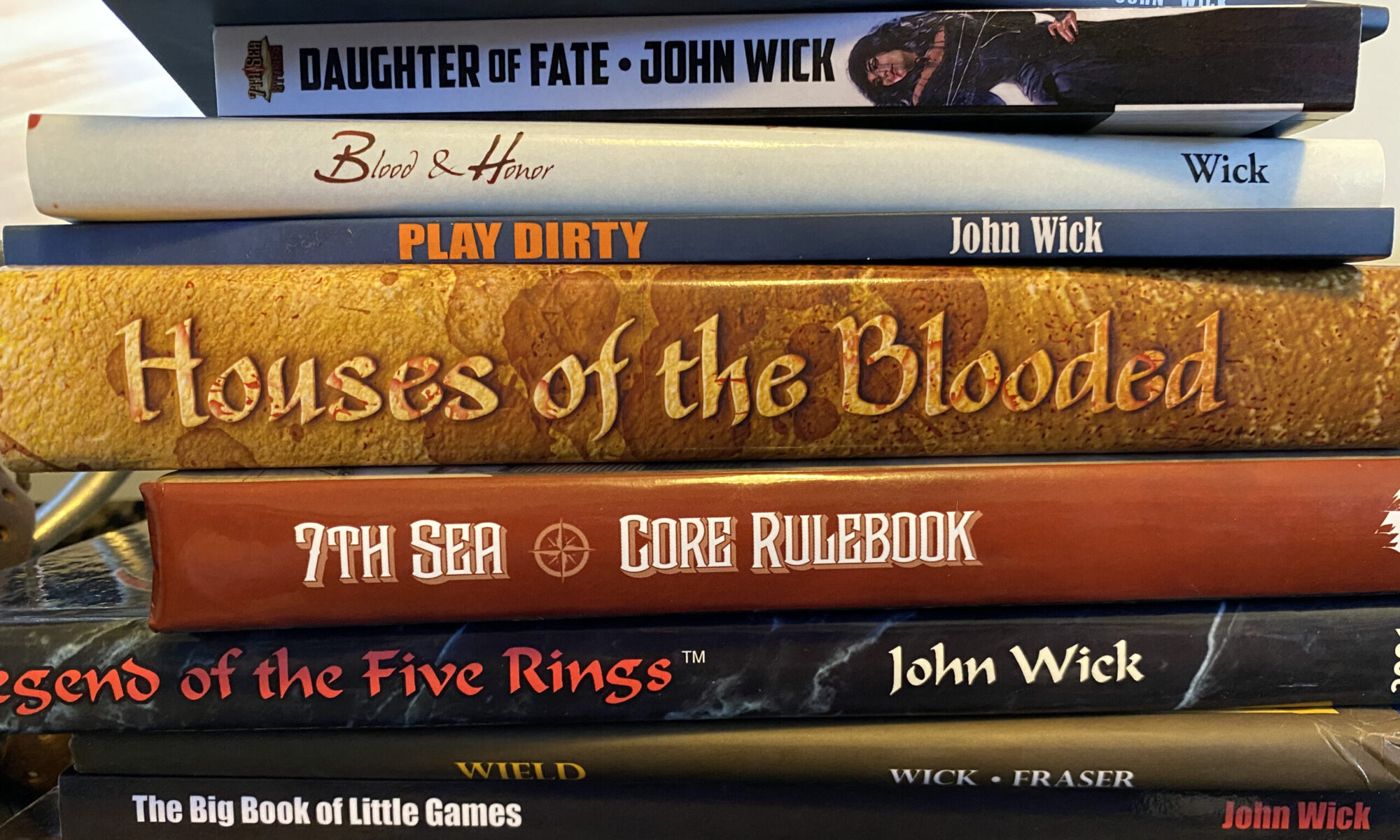Writing adventures for Houses of the Blooded is easy. I mean, easy. No, easier than that.
I’ve run the game for multiple groups. Con games, house games, no matter. Months of playtest taught me many things about this game, but the one I found most remarkable was this:
If you let them, the players run the game for you.
Take for example a particular house game I ran for one playtest group. I’d forgotten I was supposed to show up and was in a rush. I had no idea what to do. So, when the game began, I turned to one of the players and said,
It’s early morning and you’re being stitched into your clothes. Your seneschal steps into the room.
“Sir,” she says, “it seems we’ve captured a spy.”
I went ahead and told the player Three Things about the spy.
1) She had long, brown hair.
2) She was Courageous.
3) Her eyes were pitch black.
The character called in the other characters and had his seneschal bring in the spy. When she was thrown to the floor, one of the players said, “I have the aspect Knows Everybody. Do I know her?”
I said, “I don’t know. Do you?”
He made a successful Wisdom risk (plus his aspect) with three wagers. He determined the following things about the spy:
1) She was Blooded of the Serpent (same House as the group).
2) She was a cousin.
3) She was a close friend.
4) She was sympathetic to their cause.
After that, other players started making Wisdom and Cunning risks, further defining her character. From those risks, we determined:
1) She was in the castle on a Revenge (thus, her black eyes) for her sister.
2) And a baby was involved.
3) A bastard child.
4) But nobody at the table was responsible.
I took it from there. When they asked her more questions, she filled in the details. Her name was Lady S, a Baronness and neighbor (you can find her in the Sample NPC chapter). It turned out their spy master (a Vassal) took advantage of her sister and one Season later, the consequences came. Birth killed her sister and she came to the castle looking for Revenge. She appealed directly to Ikhalu—bypassing the Senate—and he granted it.
The players then found themselves in a predicament. Here is a legitimate claim of Revenge. In their home. Denying her claim of Revenge is to draw Ikhalu’s wrath. What do they do?
The entire “adventure” wrote itself. Actually, to be correct, the adventure was written by the players. They used wagers and style points, determining the facts surrounding Lady S and her sordid past. They created problems for themselves. Of course, I rewarded them with style points.
Another example. Lady Shara’s party. (See below.) Walking around the room, a player told me, “I’m looking for trouble.” When I asked him what he meant, he showed me his aspect: “I’m looking for trouble.” He defined that as, “Finding situations that will cause controversy.”
I told him to make a Cunning risk (along with his aspect) and he made it with two wagers. He told me,
1) Lady Shara doesn’t like the look of Count Dali, and
2) Count Dali isn’t wearing a sword.
I had no idea who Count Dali was; the player made him up with the wager. Because anything said in a wager is true (unless it contradicts a previously established truth), Count Dali was indeed a part of the party. And Shara didn’t like the look of him. And he wasn’t wearing a sword.
Granted, he established two things with his first wager—a no-no—but I was willing to let it slide. He wasn’t in contest with anybody else and it added a new element to the party. I passed it around the table for a vote and everybody agreed. I told him, “Spend a style point for both those things in your first wager.” He agreed.
Again, the story started making itself. The players started using Wisdom risks to know more about Count Dali. Players made specific, general and vague wagers, all building on each other’s previous statements. In a matter of minutes, we all knew why Shara didn’t like him and how they could win her favor. All from one little observation.
So, my advice for writing adventures in Houses sounds a lot like this.
